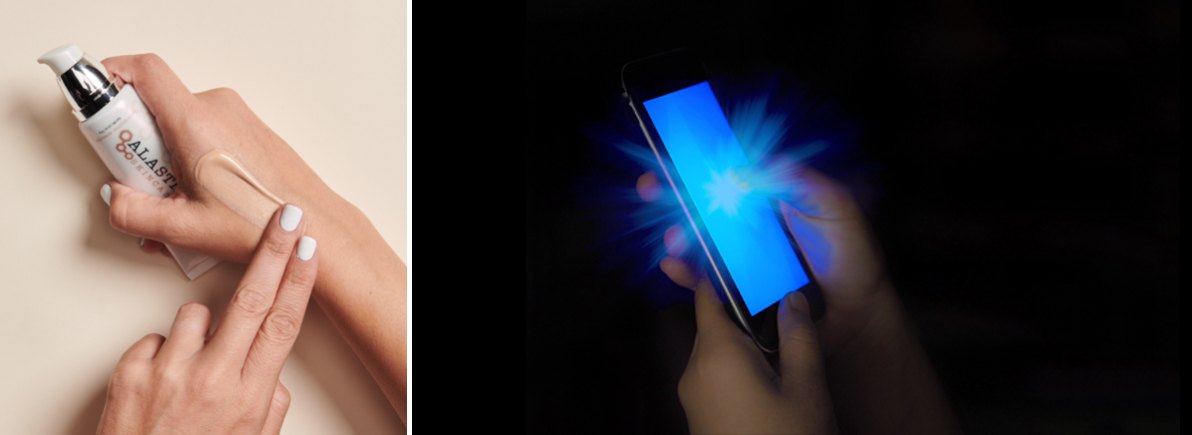

25 Jun,2021
Most of my patients feel like they aged exponentially in 2020. They feel obligated to smile with their “eyes” while wearing the mask so people don’t think they are unfriendly or mad. Lots of Botox this year to fight crows feet. However, that is not the main reason… most people would never suspect the artificial light in their house or office as a culprit for creating sun-damage.
People spent an extraordinary amount of time inside, in front of their computers, phones, tablets etc. Women said they haven’t put on makeup in almost a year because they rarely leave the house.
Blue light, the kind emitted from screens, is a type of high energy visible light, or HEV. While blue light is strongest from environmental sources like the sun, electronic screens can have similar effects. Blue light can increase signs of aging and sun-damage such as hyperpigmentation, collagen breakdown, redness, inflammation, swelling/edema and oxidative stress in the form of free radicals. Sleep-disrupting qualities from watching TV and using our phones at night results in a lack of sleep which causes hormone fluctuations that can flare skin conditions and can accelerate aging.

Blue light used as LED therapy to help decrease inflammation and bacteria in acne is a single wave length. The blue light that we are exposed to in the environment has a broader spectrum. This full range of high-energy visible light is the cause of accelerated photo-aging and skin concerns. It is more pronounced in sunlight and fluorescent light than in incandescent light. However, the brilliant white LED bulbs that are so popular are an increased risk for sun-damage.
While it can feel pointless to put on sunscreen for days spent inside staring at computer screens or scrolling through phones, don’t forget to protect your skin from blue light.
Sunblock vs Sunscreen – Sunscreen does not protect against the UVC rays that are coming from the blue light devices. To fully protect yourself, use sunblock specifically formulated to block blue light. Physical blocks with titanium dioxide and zinc oxide help reflect light rays to offer broad protection against UV. The newest sunsblocks protect skin without the heavy, white cast of zinc oxide. They come with a sheer tint which adds another layer of protection as well as making them more cosmetically appealing.
My favorite sunblocks:
https://www.alastin.com/collections/welcome?designate-location=3187
https://revisionskincare.com/?scpid=20183
Appointment
Request
Please call for an appointment: 972-869-6900,
use our book now online service or email.
Our Favorite
Links
Please "like" us on Facebook!
fb.com/Skin.Technology.SherryModern portrait photography with an artistic flair.
pattyfoppen.com